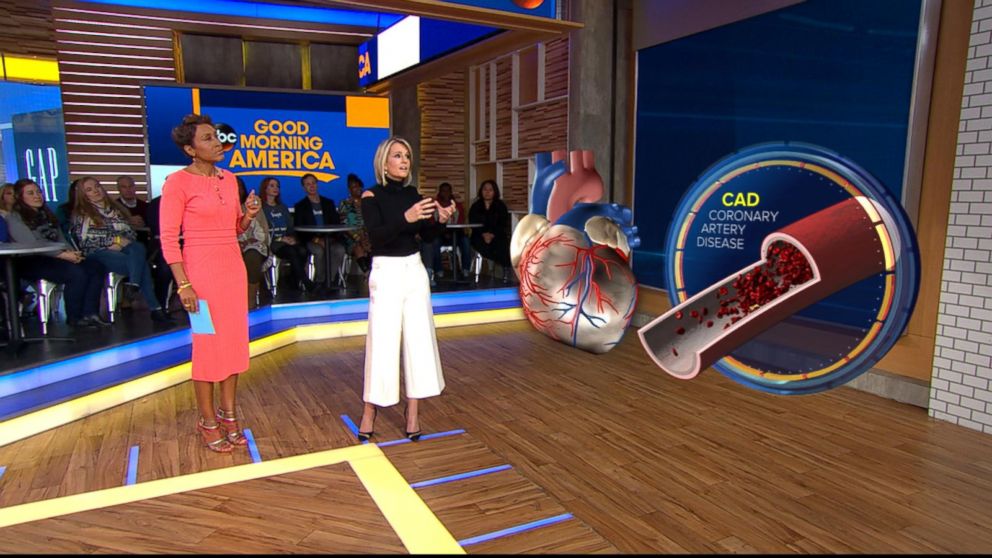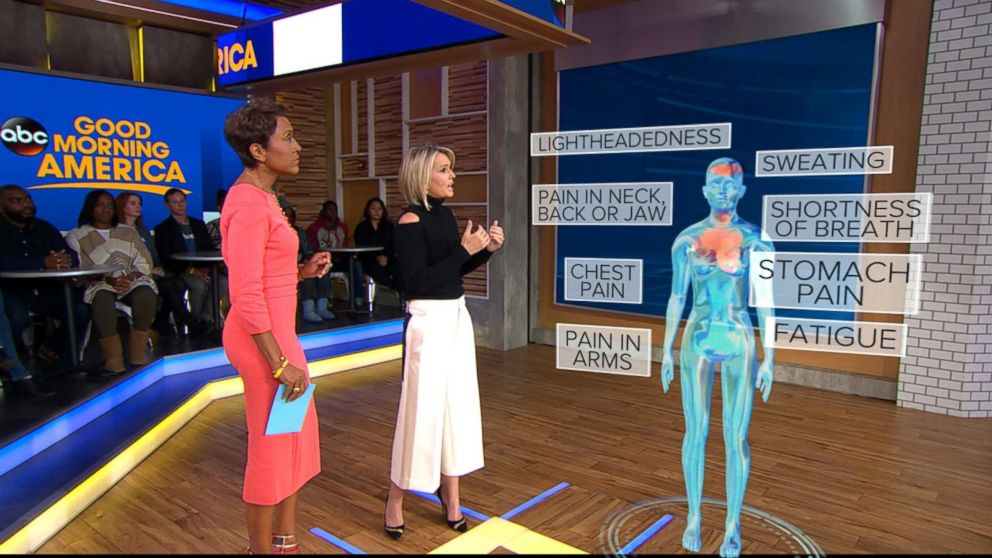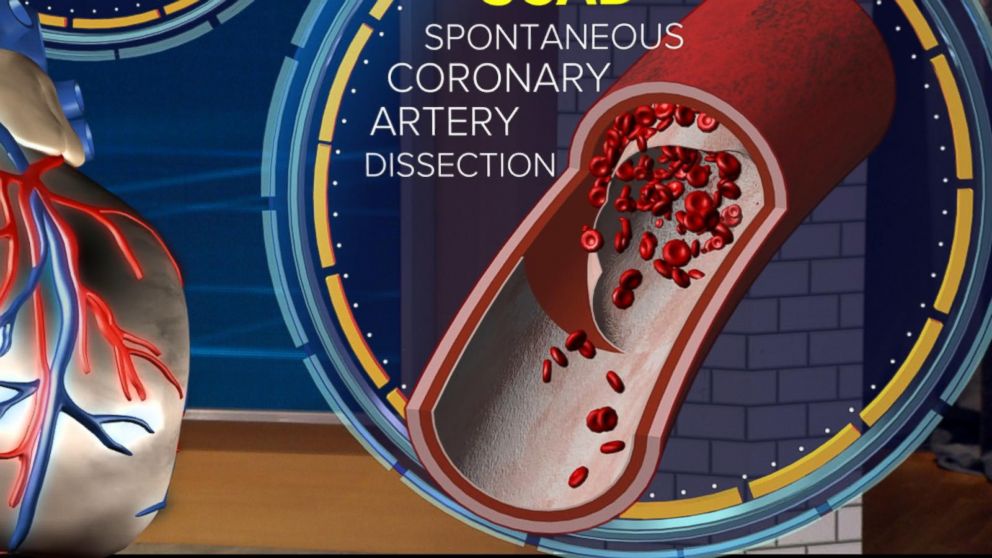What to know about SCAD, a leading cause of heart attacks for young women
The condition is "more common in women" and "can be fatal," Dr. Ashton said.
— -- Two women who suffered from sudden heart attacks triggered by a little-known medical condition are sharing their terrifying stories to raise awareness for one of the major causes of heart attacks in women under 50.
"They say life can change in a minute ... it did," Trisha Sullivan, a schoolteacher from upstate New York, told ABC News of her sudden heart attack.
Maryn Cox, a mother of three from Georgia also reflected on her heart attack two years ago, saying that she now lives "every day as if it were my last, cause that could have been my last."
Cox said that she had just given birth to her daughter, and at first, it was a joyful time for her young family.

"We were very excited," she said. "She was healthy, and I felt great."
Cox added that the following weeks after she gave birth were a bit stressful and while her blood pressure was mildly elevated, her doctor just sent her home with some medication.
Just five weeks after giving birth to her daughter, however, Cox told ABC News that her health suddenly took a turn for the worse.
"It felt like pressure, possibly gas ... acid reflux, I wasn't sure what it was," She said of her symptoms. "One of my arms went numb ... I started getting nauseous ... cold sweats."
She said she then called her husband and told him, "Something is wrong ... I think I need help."
Trisha Sullivan told ABC News that she was never much of an athlete but decided to participate in a long bike ride for a charity event.
"I thought 'Well, I can ride a bike' so I made it my personal goal to really get into bike riding to stay healthy," she said. "I was bound and determined to do this 100 miles."
After training extensively, she said that she felt physically prepared for the event, but early on in the ride, she realized something wasn't right.
"I just kept dropping back. I couldn't keep up. I was short of breath, but we all chalked it up to nerves," she said.

She said that she rode only 57 of the 100 miles that day. Three days later, she says she experienced sore arms and heartburn, and later that night, she passed out.
"I screamed to my husband ... and as I did that, I fell and passed out," she said. "I heard a loud crash and I realized I had hit my head on the nightstand."
Both Cox and Sullivan later learned that what they experienced was a little-known type of heart attack triggered by a condition called spontaneous coronary artery dissection (SCAD).
Cox said that prior to her experience, she had "never heard of it."
Sullivan echoed Cox's sentiments, saying she "didn't understand that's what it was until the doctors came in and explained it to me."
What to know about SCAD
ABC News' chief medical correspondent Dr. Jennifer Ashton said that both women reached out to her last year because they wanted to "share their story."
"Most people have heard of heart attacks, but the ones caused by a blockage of the artery," Ashton said. "This is something different."
Ashton added that SCAD is "more common in women" and "can be fatal."
Using a 3-D augmented reality human model dubbed "Gemma," Ashton demonstrated on "GMA" today the difference between heart attacks caused by coronary artery disease and heart attacks caused by SCAD.

"If you look inside Gemma's heart, of course you know there are blood vessels that carry oxygenated blood to supply the heart muscle," Ashton said. "With a traditional heart attack, a plaque forms.
"Over time that plaque can rupture or break off," she added. "When it does that, red blood cells attach to it and it can clog off that artery, killing the muscle downstream."

"SCAD is something different," Ashton said. "When you go inside Gemma's heart, SCAD, the key words here are artery dissection. There are three layers to the wall of this blood vessel, they tear away from each other, trapping blood in between those layers.
"You get the same end result. That blood vessel gets clogged off, kills the heart muscle downstream," she said.
Symptoms to look out for
When it comes to what to look out for, Ashton said, "Your job isn't to distinguish is this a heart attack caused by SCAD or a heart attack caused by ruptured plaque, your job is to recognize the symptoms."
Symptoms of SCAD can appear "head to toe" according to Ashton.

"You have lightheadedness, sweating, pain radiating in the neck back or jaw, shortness of breath, chest pain, stomach pain, fatigue, and pain radiating down one or both arms," she said. "If you feel these symptoms you need to call 911, get to an emergency room immediately."
Since the exact cause of SCAD remains unclear, it is also unclear how to prevent it, according to Ashton.
"We know that it's more common in women. There may be a hormonal aspect to it because it can surround pregnancy," she said. "And there's a thinking that some that have SCAD, male or female have a problem with the integrity of the walls of their blood vessels."
The most important thing to take away is to be able to recognize the symptoms and get prompt treatment, Ashton said, adding that this "can be lifesaving."
Common risk factors for SCAD include being female, recently giving birth, underlying blood vessel conditions, extreme physical exercise and severe emotional stress, among others, according to the Mayo Clinic, a medical research group.
In addition, people who develop SCAD are often healthy, according to the Mayo Clinic, and most don't possess the risk factors for heart disease, which is why it is important to seek emergency attention if you experience SCAD symptoms even if you think you are not at risk for a heart attack.




